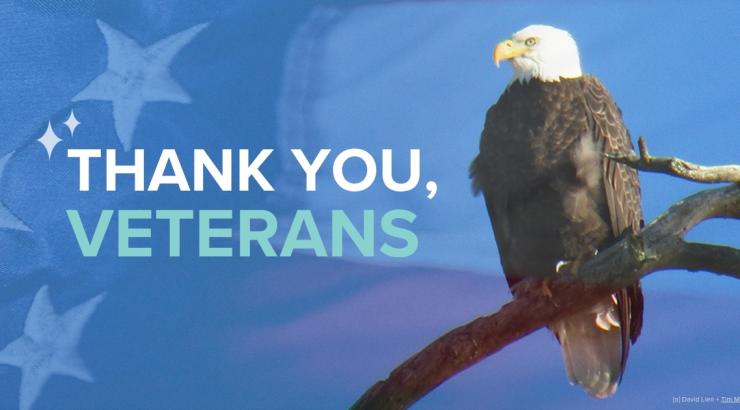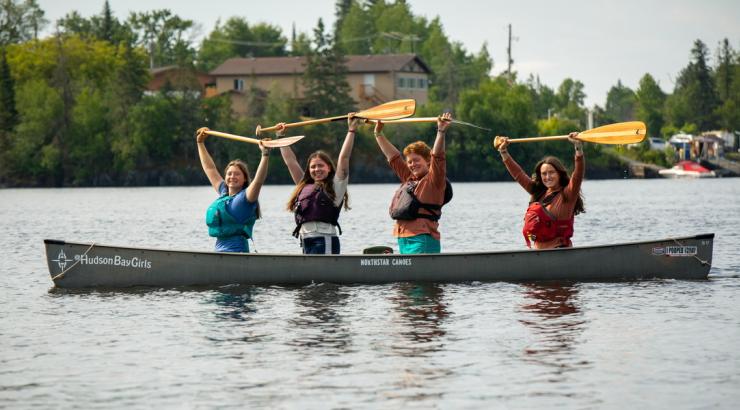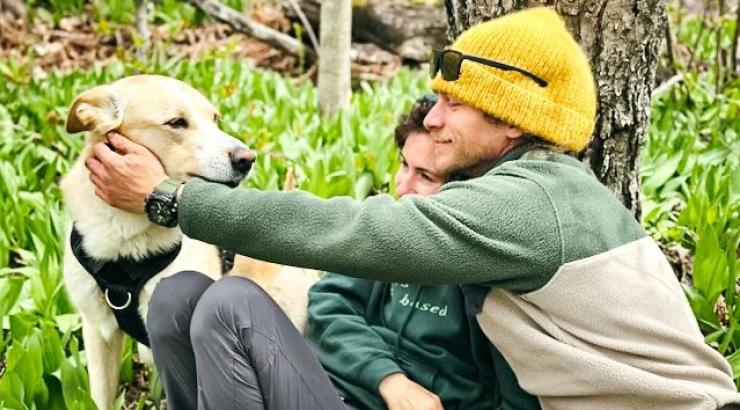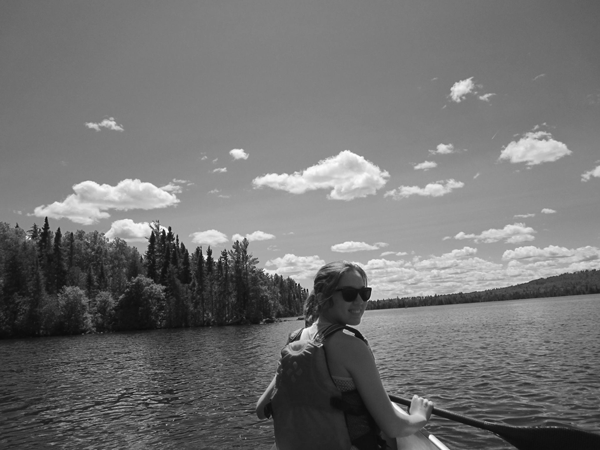
Photo Credit: Reid Carron
The first time I set foot in a canoe, there was a storm. Rain poured through my jacket and hid the far side of the lake behind a damp grey veil. The waves rocked us as we paddled, and I loved every minute. Luckily, there were other people in the canoe who knew what they were doing, so I had the unique privilege of feeling like an intrepid, seasoned adventurer while simultaneously learning how to paddle.
The setting of my second canoe adventure was quite different. A long, winding drive beneath a blue sky and scattered clouds took us from Sustainable Ely to Sawbill Outfitters, where Mr. Hansen generously lent us a Minnesota 3 canoe. Sawbill Lake awaited us, a calm reflection of a gentle sun. After balancing the packs in the canoe, we climbed in and started to paddle.
We had embarked on this journey as a delivery service. The two bulky packs we carried with us contained supplies for Dave and Amy Freeman as they continue their Year in the Wilderness expedition. The packs were filled with dog food, muesli bars, granola, and an assortment of dehydrated vegetables that I had prepared in Sustainable Ely’s cozy upstairs kitchen. After reading about them in National Geographic, processing their water quality data, and prepping their veggies, I was ecstatic to meet Dave and Amy in person.
It didn’t take much paddling to remove ourselves from the sights and sounds of other humans. Once the dock was out of sight, a small group of loons came into view. They were our companions as we glided past jack pines, white spruce, black spruce and cedar trees.
As the occupant of the bow seat, I was tasked with scouting for any rocks big enough to pose a threat to the bottom of the canoe. Most of the rocks were far below the surface, forming a mute landscape of sandy plains and sharp drop-offs. Occasionally, we would float past a submerged forest of swaying plants. As we neared the shore for our portage, minnows and crayfish darted away from the looming shape of the canoe. A short path led us through a tunnel of trees to Alton Lake, where crystal clear water revealed a pebbled bottom and kelp-like plants. My companions, Reid and Becky, spotted birds and stubby saplings that sprouted up from the rocks, but I was fixated on the underwater scenery.
Dave and Amy waved at us from their campsite, a little clearing on the shores of Alton Lake. We parked the canoe at the waterfront and climbed out. In my excitement, I missed the rocks and stepped right into the water. After clambering up on shore, the Freemans greeted me with warm smiles and handshakes, and their sweet sled dog Tank greeted me by licking my cheek. Becky and Reid introduced me as Sustainable Ely’s full-time intern, and I added that it was an honor to work for the campaign. Amy then asked what kind of work I did. Naturally, the first thing out of my mouth was
“I get to dehydrate your vegetables!”
I followed that outburst by telling them how much I loved learning the lay of the lakes through their water quality data, and how rewarding it is to talk to Sustainable Ely’s visitors about the cause. We discussed our mutual love of Maine, the dazzling clarity of Alton Lake, and the unfortunate omnipresence of microplastics.
Becky and Reid had brought fresh bread, fruit, and vegetables, and we sat down to a lunch of sandwiches and apple slices. It was delicious, and no doubt a welcome break from bags of dehydrated peas and carrots. Between bites, we remarked at the weather’s perfection. We couldn’t have asked for a better day.
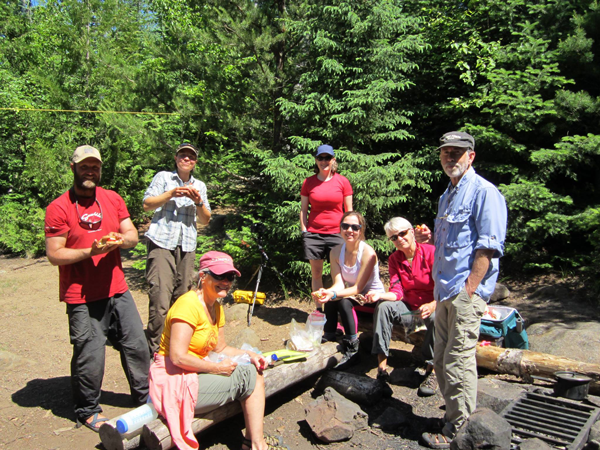
Photo Credit: Reid Carron
As we were getting ready to start paddling back the way we came, Dave had a surprise for us. He has been working on compiling videos of all the visitors, a brief personal introduction accompanied by five words they had for the Boundary Waters. Dave set up the camera and relished the opportunity to say, “quiet on the set!”
There was no way I could contain the experience of being in the Boundary Waters within only 5 words. Should I hyphenate the words to draw it out? What if I said it in French?
It was my turn to be in front of the camera.
“My name is Liesl Helminiak, and I am from Barrington, Illinois.”
Five words for the Boundary Waters.
“I want to stay here.”
This is Liesl's first summer working for the Campaign. She plans to remain active in the fight to protect the Boundary Waters. Liesl studies environmental science at Carleton College, where she will be a sophomore this fall.
